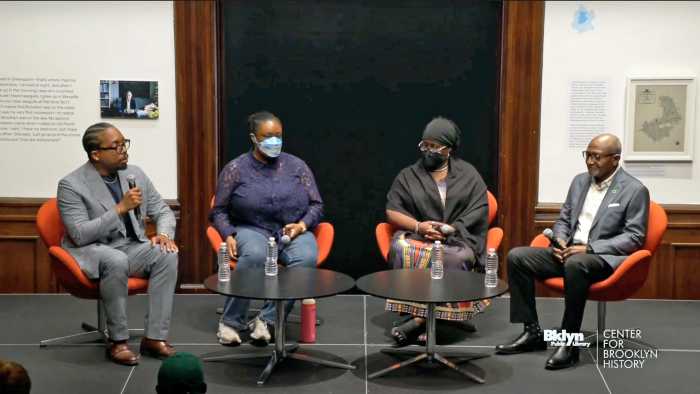Transit officials last week promised to study whether to reinstitute express service along the F line, but said the initiative might hold more benefit to residents living south of tony Brownstone Brooklyn.
The service can’t be initiated until 2013, after the renovations to the Culver Viaduct are completed, but the proposal —recently touted by Mayor Michael Bloomberg on the campaign trail — will be studied “in a year or so to see if we should,” according to Glenn Lunden, the Metropolitan Transportation Authority — New York City Transit’s senior director of subway operations improvement.
But not everyone will be the direct beneficiaries of an express F.
“F express is good for some neighborhoods and not others,” according to Andrew Inglesby, assistant director of MTA Government and Community Relations. “It’s really good for the southern portion [of the borough], but for Carroll Gardens, you have to look at which stations will be express stations.” The express would stop at Jay Street, Seventh Avenue and Church Avenue, where the infrastructure will allow its reinstatement. It would bypass Bergen Street, Carroll Street, Smith/9th Street, 15th Street and Fort Hamilton Parkway.
While Bergen Street at one time served express trains, it no longer can, because its lower level station did not receive necessary renovations in the 1990s, Lunden explained. The former express platform now stores lighting, HVAC and mechanical equipment, he added.
One benefit to riders on the local would be a less crowded commute, as longtime express line advocate and Carroll Gardens Neighborhood Association member Gary Reilly has pointed out. The hope is that once the MTA completes repairs to the elevated Culver Viaduct, along which the F travels, the set of express tracks that currently sits unused along the F line will be reactivated.
Lunden authored the recently released full line review of the F train at the request of State Senator Daniel Squadron, who welcomed him and other transit officials to a town hall style meeting Dec. 10 at Public School 58 in Carroll Gardens.
He explained that the F, which rumbles for 27 miles along the second longest route in the city (the A line is the longest) lags behind its peers in terms of on time performance, with 84 percent of trains coming in on time, compared to the system-wide average of 88 percent. The length of the line, its aging infrastructure, itscomplexity and high ridership all have an impact on whether trains roll into stations on time, he explained.
The agency has vowed to introduce new cars to the line in the next year, and would continue to review the line’s infrastructure, modernize key components of its signal system, and streamline construction and repair work. A reorganization of line management is also underway, an initiative that aims at greater accountability. “I am determined to improve it,” vowed F line manager Dwayne Anluro.
























